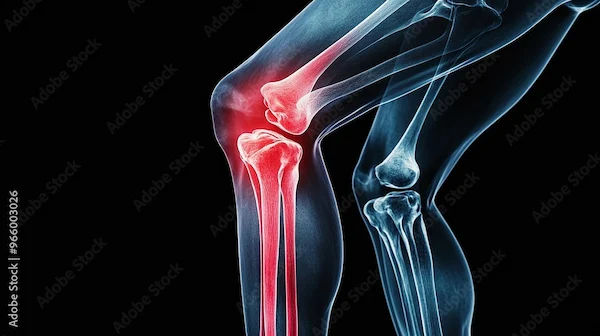Castor Oil in Belly Button: Benefits, Ayurvedic Beliefs, and Facts
Curious about castor oil benefits and navel therapy? Learn what ayurvedic oils traditions say, what science shows, safety tips, and practical alternatives.

Written by Dr. Siri Nallapu
Reviewed by Dr. Rohinipriyanka Pondugula MBBS
Last updated on 13th Nov, 2025

Introduction
Social media has made “navel therapy” (putting oil in the belly button) a wellness trend. Many people are curious whether applying castor oil to the navel can deliver castor oil benefits for digestion, hormones, skin, or “detox.” Others have heard about ayurvedic oils used on the belly button and want to know what’s traditional versus what’s proven. This guide walks you through the beliefs, the current science, safe ways to try it if you’re curious, and evidence-based alternatives for common concerns.
Consult a Top Ayurveda Specialist for Personalised Advice
What Is Castor Oil?
Castor oil is a plant oil pressed from the seeds of the castor bean plant (Ricinus communis). It’s rich in ricinoleic acid and has a long history of use as:
- An over-the-counter stimulant laxative (when taken by mouth)
- An ingredient in skin products as a thick, occlusive moisturizer
- A component of “castor oil packs” used in complementary health practices
Important: The health effects of swallowing castor oil are not the same as applying it to your skin, and neither is the same as putting a few drops in your navel.
Navel Therapy: What People Do and Why?
“Navel therapy” is a popular name for placing a small amount of oil into the belly button and letting it sit for several minutes, sometimes with a warm compress. People use different oils—castor oil, sesame oil, coconut oil, or ghee—and hope for benefits like improved digestion, reduced cramps, better sleep, skin hydration, or “balancing” hormones.
From a scientific perspective, your belly button is skin and scar tissue—not a special absorption “gateway” to your internal organs. While skin can absorb small amounts of certain substances, there’s no evidence that the navel absorbs oils differently from the surrounding skin or that this practice treats internal medical conditions. Still, some people find the ritual relaxing, and the skin around the navel may feel softer after using an occlusive oil.
Ayurvedic Beliefs About the Navel and Ayurvedic Oils
In Ayurveda (traditional Indian medicine), the navel (nabhi) is considered a vital center (marma point). Traditional practices may include applying warm ayurvedic oils like sesame oil or ghee to the abdomen or navel area as part of self-massage (abhyanga) to promote grounding and relaxation.
Key points to know:
The key points are:
- These are traditional, mind–body practices. They can be soothing and help you unwind.
- Modern clinical research is limited on specific health outcomes from applying ayurvedic oils to the navel.
- Ayurvedic self-care can complement, but not replace, medical evaluation and treatment when needed.
Castor Oil Benefits: What’s Supported vs. What’s Not
It’s helpful to separate known castor oil benefits from unproven claims—especially for navel therapy.
Supported by evidence (but not via the navel)
- Constipation relief when taken by mouth: Castor oil acts as a stimulant laxative. It can cause bowel movements but may lead to cramping and diarrhea; it’s not ideal for routine constipation and isn’t recommended for long-term use.
- Moisturizing and softening skin when used topically: Castor oil is an occlusive that helps seal in moisture. Some people find it soothing for dry skin.
Possibly helpful but not well-studied
Relaxation from warm castor oil packs applied to the abdomen: Warmth and gentle pressure can feel calming for some people. Clinical evidence for specific internal benefits is limited.
Not supported by good scientific evidence (for navel application or otherwise)
- “Detoxifying” the liver or body
- Balancing hormones or improving fertility
- Treating thyroid, gallbladder, or kidney disease
- Curing constipation, IBS, or menstrual pain by applying oil to the navel
- Absorbing oils through a special internal “Pechoti gland” (not recognized in anatomy or medical literature)
If You Want to Try Navel Therapy With Castor Oil
If you’re curious and otherwise healthy, a careful, skin-safe approach focuses on comfort and hydration of the skin rather than medical treatment.
Simple steps
The simple steps to follow are:
1) Patch test first:
Dab a drop of castor oil on the inner forearm for 24–48 hours to check for redness, itching, or rash.
2) Clean and dry the area:
Gently wash and thoroughly dry your belly button to prevent trapping moisture and debris.
3) Use a small amount:
Place 2–3 drops of high-quality, cold-pressed castor oil into the belly button.
4) Optional warmth:
Lie back and place a warm (not hot) compress over the area for 10–20 minutes. Avoid heat if you have reduced skin sensation.
5) Wipe off excess:
Gently blot away oil to avoid staining clothes and trapping moisture.
How often?
1–3 times weekly is a common routine people follow. There is no evidence-based “dose.” Stop if you notice irritation.
Safety tips
The safety tips are:
- Do not apply to broken, irritated, or infected skin.
- Avoid undiluted essential oils in the navel; they can burn or irritate skin. If you use essential oils at all, they must be properly diluted and patch tested.
- Keep oil away from the eyes and genitals.
- Talk to your clinician first if you are pregnant, breastfeeding, have sensitive skin or eczema, or have had recent abdominal surgery.
Who Shouldn’t Use Castor Oil in the Belly Button?
Avoid castor oil, in below scenarios:
- People with a known allergy or past irritation from castor oil
- Those with active skin conditions or infections in or around the navel
- People who are pregnant, unless cleared by their obstetric clinician (castor oil taken by mouth can stimulate uterine contractions; topical use is generally less concerning but still worth discussing)
- Infants and young children (their skin is more sensitive)
Common Reasons People Try Navel Therapy—and Evidence-Based Options
People often try navel therapy seeking help for specific concerns. Here’s what research supports:
Constipation:
Try fiber (25–38 g/day), hydration, physical activity, and a regular bathroom routine. If needed, osmotic laxatives (like polyethylene glycol) are usually preferred over stimulant laxatives for routine use. Talk with a clinician if constipation persists.
Menstrual cramps:
A heating pad, gentle movement, and NSAIDs (e.g., ibuprofen) often help.
Castor oil applied to the skin hasn’t been proven to reduce cramps, but a warm compress may feel soothing.
Stress and sleep:
Deep breathing, a consistent bedtime, light stretching, and mindfulness can improve relaxation and sleep quality.
Dry skin at the navel
Use a bland moisturizer (petroleum jelly, fragrance-free creams). Castor oil can be used as an occlusive, but patch test first to avoid irritation.
Conclusion
Castor oil benefits that are scientifically supported include acting as a stimulant laxative when taken by mouth and moisturizing the skin when used topically. Navel therapy with castor oil is a traditional and popular self-care practice, but there’s no strong evidence it treats internal conditions, “detoxifies,” or balances hormones. If you want to try it as a relaxing skin-care ritual, keep it simple and safe: patch test, clean and dry the area, use only a few drops, and avoid if you’re pregnant or have sensitive or broken skin—unless your clinician approves. For specific health concerns (constipation, cramps, stress, dry skin), use evidence-based strategies and speak with a healthcare professional for personalized advice.
Consult a Top Ayurveda Specialist for Personalised Advice
Consult a Top Ayurveda Specialist for Personalised Advice

Dr. Pepsy Jose
Panchakarma Practitioner
14 Years • BAMS, MD Ayurveda (Panchakarma)
Bengaluru
AYURRHYTHM HOLISTIC CLINIC AND PANCHAKARMA THERAPY, Bengaluru

Dr. Rik Sadhukhan
Ayurveda Practitioner
8 Years • BAMS
Kolkata
Vedhive Ayurveda, Ballygunge, Kolkata

Dr. Anjan Das
Ayurveda Practitioner
8 Years • Ayurvedacharya ( B.A.M.S )
Dumdum
Vedhive Ayurveda Clinic, Dumdum

Dr. Shiv Prakash Singh
Ayurveda Practitioner
19 Years • BAMS
Kolkata
Vedhive Ayurveda College Street, Kolkata
Consult a Top Ayurveda Specialist for Personalised Advice

Dr. Pepsy Jose
Panchakarma Practitioner
14 Years • BAMS, MD Ayurveda (Panchakarma)
Bengaluru
AYURRHYTHM HOLISTIC CLINIC AND PANCHAKARMA THERAPY, Bengaluru

Dr. Rik Sadhukhan
Ayurveda Practitioner
8 Years • BAMS
Kolkata
Vedhive Ayurveda, Ballygunge, Kolkata

Dr. Anjan Das
Ayurveda Practitioner
8 Years • Ayurvedacharya ( B.A.M.S )
Dumdum
Vedhive Ayurveda Clinic, Dumdum

Dr. Shiv Prakash Singh
Ayurveda Practitioner
19 Years • BAMS
Kolkata
Vedhive Ayurveda College Street, Kolkata
More articles from General Medical Consultation
Frequently Asked Questions
Can castor oil in the belly button detoxify my body?
No. There’s no scientific evidence that placing castor oil in the navel “detoxifies” the liver or whole body. Your liver and kidneys do the body’s detox work. Castor oil may moisturize skin, and a warm compress can feel relaxing, but detox claims are not supported.
Is there really a “Pechoti gland” in the navel that absorbs oils?
No. The “Pechoti gland” isn’t recognized in anatomy or medical science. The belly button is skin and scar tissue. While some topical absorption through skin is possible, there’s no special absorption channel in the navel.
Is castor oil safe during pregnancy?
Do not take castor oil by mouth during pregnancy unless your obstetric clinician advises it; it can stimulate uterine contractions. For topical use (including the navel), evidence is limited—discuss any use with your clinician first.
How long should I leave castor oil in my belly button?
If you choose to try it, 10–20 minutes with a small amount (2–3 drops) is common. Wipe off excess afterward. There’s no research-backed “best” duration; stop if your skin becomes irritated.
What kind of castor oil should I use—and can I mix essential oils?
Choose a plain, cold-pressed castor oil from a reputable brand. Avoid undiluted essential oils in the navel; they can irritate or burn skin. If you use essential oils at all, dilute properly, patch test on the forearm, and discontinue if any irritation occurs.




